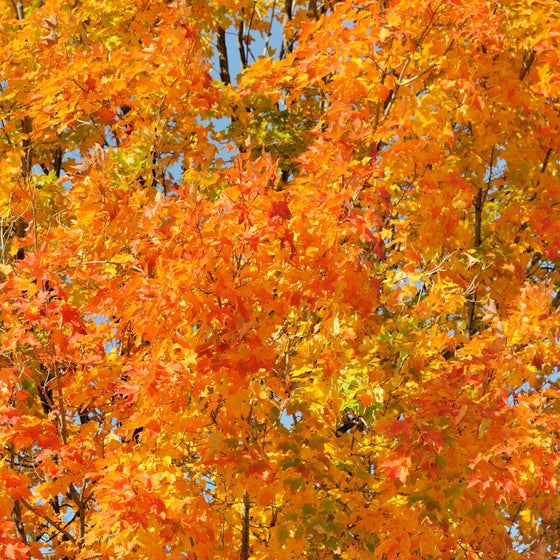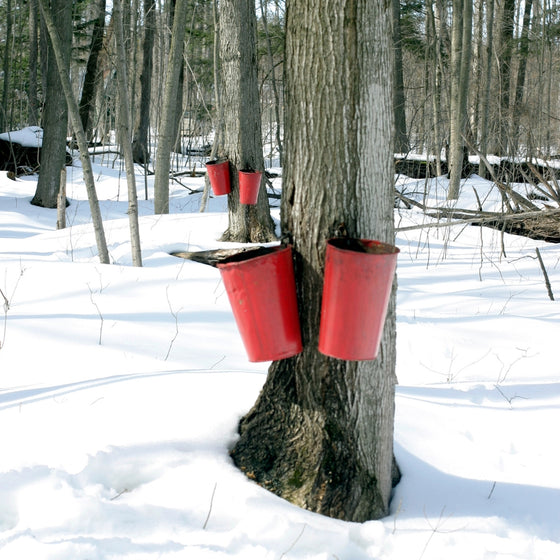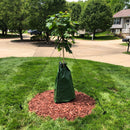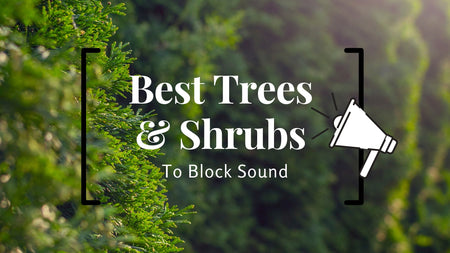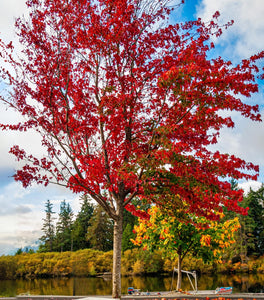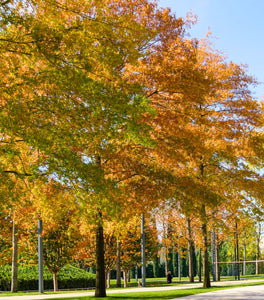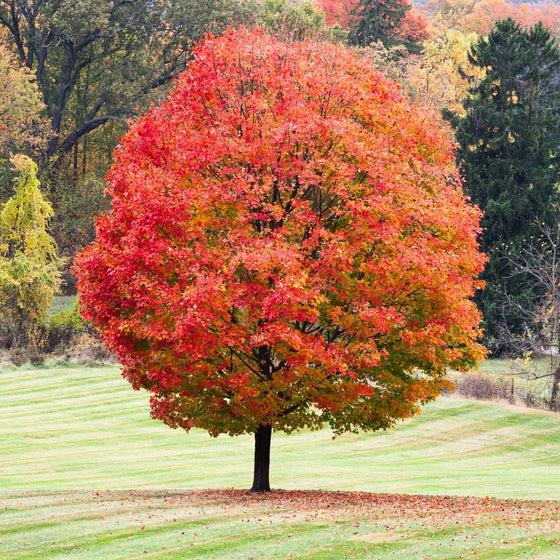
Images Depict Mature Plants
Sugar Maple Trees for Sale Online
The Sugar Maple Tree (Acer saccharum) is a classic, long-lived shade tree beloved for its majestic form, dense canopy, and breathtaking fall color. Reaching heights of 60 to 75 feet with a broad, symmetrical crown, the Sugar Maple is a top choice for large landscapes, parks, and yards that need reliable shade and four-season beauty. In autumn, its lush green leaves transform into a brilliant display of yellow, orange, and fiery red, making it one of the most striking trees for fall foliage across North America.
In addition to its ornamental value, the Sugar Maple is also the iconic source of maple syrup. This cold-hardy deciduous tree thrives in USDA Zones 3–8 and prefers moist, well-drained soil and full sun to partial shade. Its strong branches and upright growth habit make it wind-resistant and excellent for establishing a dependable, low-maintenance canopy over lawns, driveways, or open fields. As a native tree, it supports local ecosystems by providing food and habitat for pollinators, birds, and small wildlife.
Whether planted as a standalone specimen or in rows for a dramatic allée, the Sugar Maple Tree offers timeless beauty and lasting value to any landscape. Its tolerance to cold temperatures, long lifespan, and jaw-dropping fall display make it a favorite among homeowners, landscapers, and nature lovers alike. Add a Sugar Maple to your landscape and enjoy generations of shade, color, and classic American charm.

| Hardiness Zone: | 3-8 |
|---|---|
| Mature Height: | 60 to 80 feet |
| Mature Width: | 40 to 50 feet |
| Classification: | Deciduous tree, shade tree |
| Sunlight: | Full sun to part sun |
| Habit: | Upright |
| Foliage: | Dark green, brilliant orange to reddish fall color |
| Flower Color: | Inconspicuous |
| Pruning Season: | No pruning needed |
| Soil Condition | Any well drained soil |
| Water Requirements: | Water well until established |
| Uses: | Tolerates moist soil and full sun. Full sun brings out the best fall color. Will adapt to drier sites |
How to Care for Sugar Maple
Be sure to read our planting instructions to ensure a healthy and happy Sugar Maple tree for years to come!
How do I Plant Sugar Maple Trees?
To plant a Sugar Maple tree (Acer saccharum), begin by selecting a site that offers full sun to partial shade and has well-drained, slightly acidic to neutral soil. Sugar Maples thrive in open areas where they can develop their broad, symmetrical canopy without competition from nearby trees or structures. Dig a hole twice as wide and just as deep as the tree's root ball to give the roots room to spread. Gently loosen the roots before placing the tree in the hole, making sure the root flare (where the roots meet the trunk) is level with or just above the soil surface. Backfill with native soil, firm it gently, and water thoroughly to eliminate air pockets and help the tree settle. After planting, apply a 2–3 inch layer of mulch around the base, keeping it a few inches away from the trunk to prevent rot and discourage pests. This helps retain moisture, regulate soil temperature, and reduce weed competition. Water the tree deeply once or twice a week during the first growing season, especially during dry spells, to encourage strong root establishment. Avoid fertilizing at planting time; instead, allow the tree to acclimate and fertilize the following spring if needed. With proper planting and care, your Sugar Maple will develop into a majestic shade tree that provides beauty, habitat, and brilliant fall color for generations to come.
How do I water Sugar Maple Trees?
Watering a Sugar Maple tree (Acer saccharum) properly is essential, especially during its first few years of establishment. After planting, water deeply 1–2 times per week, ensuring the root zone remains consistently moist but not waterlogged. Deep watering encourages roots to grow downward, creating a stable foundation for the tree. Use a soaker hose or slow-drip method to allow the water to penetrate deeply into the soil around the base of the tree. During hot or dry periods, increase the frequency of watering to prevent stress, particularly in the summer when young Sugar Maples are most vulnerable to drought. Once established, mature Sugar Maple trees are moderately drought-tolerant but will benefit from occasional deep watering during extended dry spells. Check the soil moisture regularly—if the top few inches are dry, it's time to water. Avoid shallow, frequent watering, which promotes weak surface roots. Applying a 2–3 inch layer of mulch around the base of the tree helps retain soil moisture, suppress weeds, and protect roots from extreme temperature fluctuations. With consistent and deep watering, your Sugar Maple will develop into a healthy, long-lived shade tree known for its stunning fall foliage and strong structure.
How do I fertilize Sugar Maple Trees?
Fertilizing a Sugar Maple tree (Acer saccharum) supports healthy growth, vibrant foliage, and long-term tree vigor. The best time to fertilize is in early spring before new growth begins or in late fall after the tree has gone dormant. Use a slow-release, balanced fertilizer such as 10-10-10 or a formula specifically designed for shade trees. Spread the fertilizer evenly around the drip line (the area under the outer edges of the branches), avoiding direct contact with the trunk. Water thoroughly after application to help the nutrients penetrate the soil and reach the root zone, which promotes strong root development and consistent growth. Avoid over-fertilizing, especially with high-nitrogen blends, as this can cause excessive leaf growth at the expense of root health and fall color. Mature Sugar Maples generally do not require frequent fertilization unless they are growing in poor soil or showing signs of nutrient deficiency, such as pale leaves or stunted growth. A soil test can help determine if fertilization is needed and guide your choice of nutrients. With proper fertilization practices, your Sugar Maple tree will thrive, producing dense, green foliage in spring and summer and showcasing its legendary red, orange, and yellow hues in the fall, making it a standout in any landscape.

How do I prune Sugar Maple Trees?
Pruning a Sugar Maple tree (Acer saccharum) helps maintain its structure, promotes healthy growth, and enhances its overall appearance. The best time to prune a Sugar Maple is in late winter to early spring while the tree is still dormant, before new growth and sap flow begin. Use clean, sharp pruning tools to remove any dead, diseased, or damaged branches first. Next, thin out crowded areas to improve air circulation and light penetration, which helps reduce the risk of disease. Focus on preserving the tree’s natural shape, and avoid heavy pruning, as Sugar Maples can be sensitive to over-cutting, especially during the growing season. To maintain a strong central leader and balanced branching, selectively remove crossing or inward-growing limbs while young, as it's easier to shape a tree during its early years. For mature Sugar Maple trees, pruning should be minimal and limited to maintaining clearance, removing hazards, or correcting structural issues. Avoid pruning in late spring and early summer when the tree’s sap is actively flowing, which can lead to messy bleeding and stress the tree. With proper and timely pruning, your Sugar Maple will grow with a strong structure and provide generations of shade, vibrant fall color, and visual appeal in your landscape.


